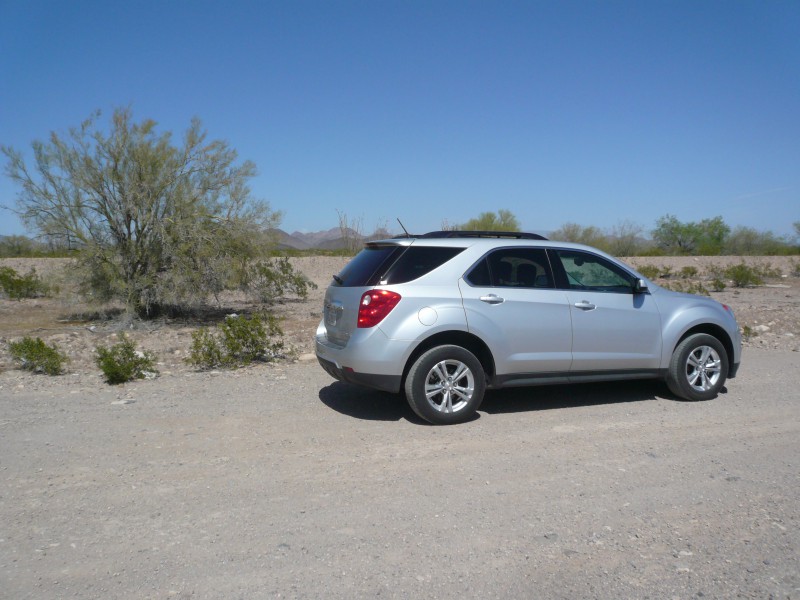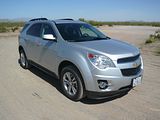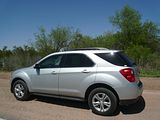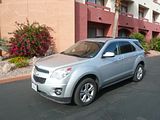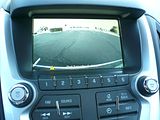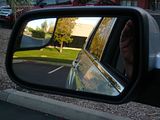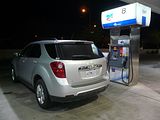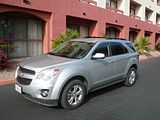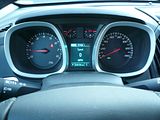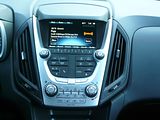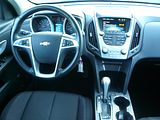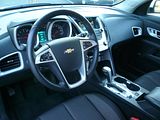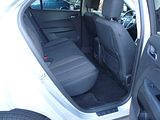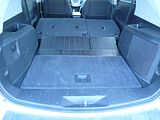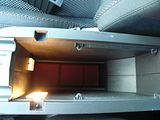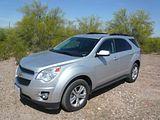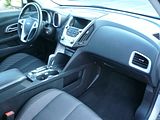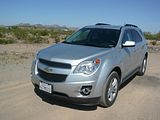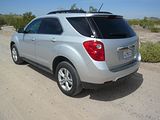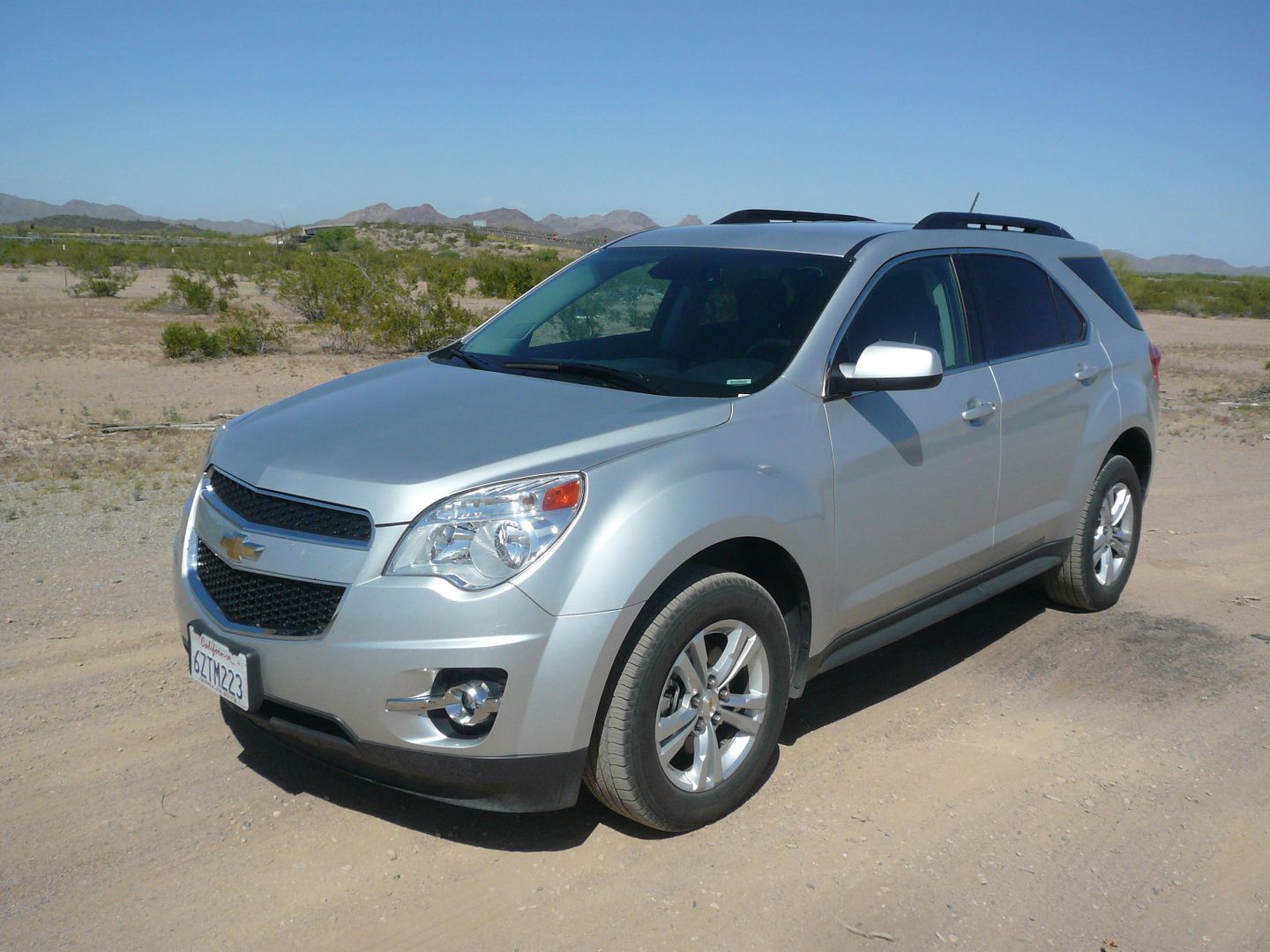
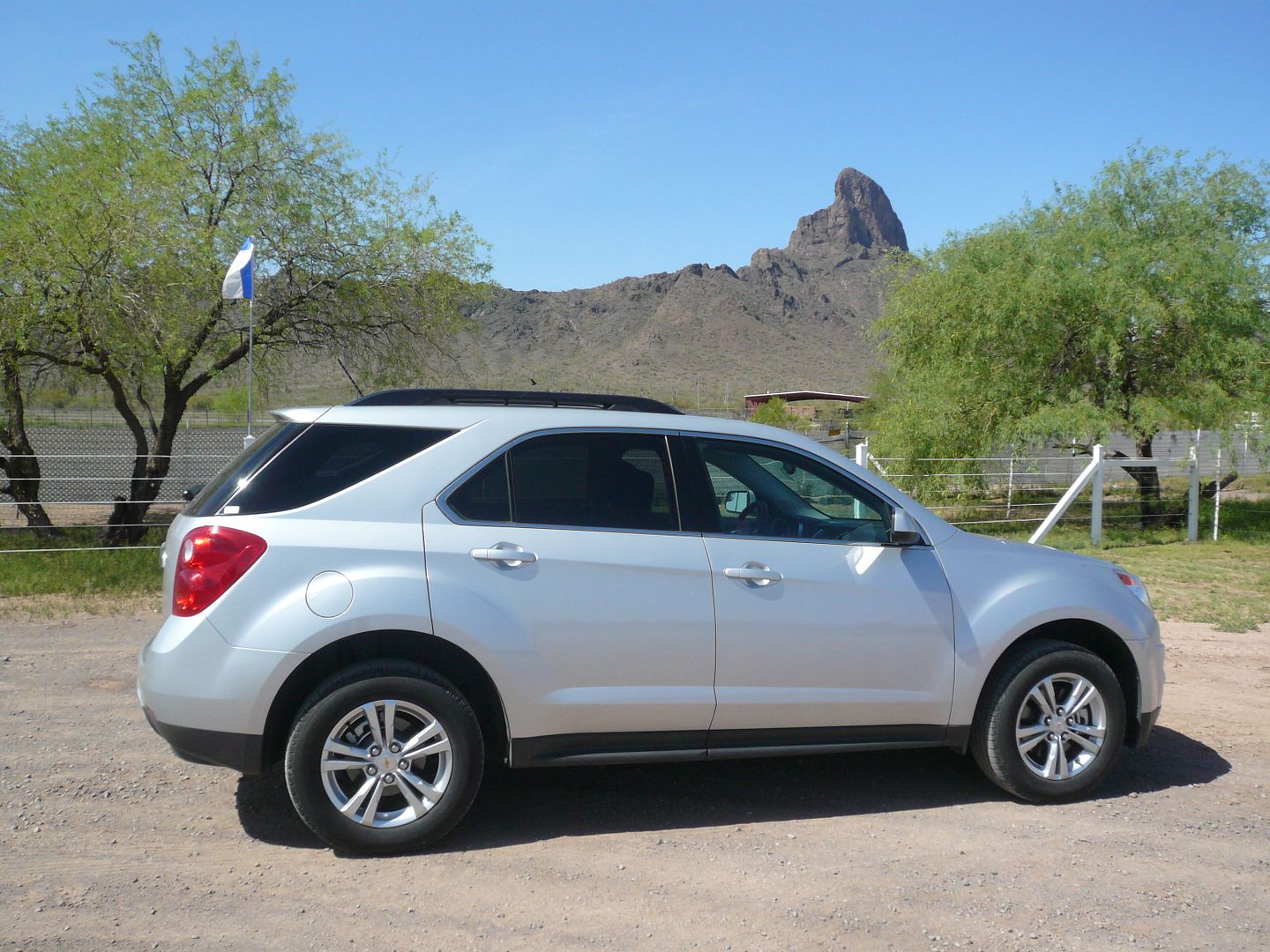
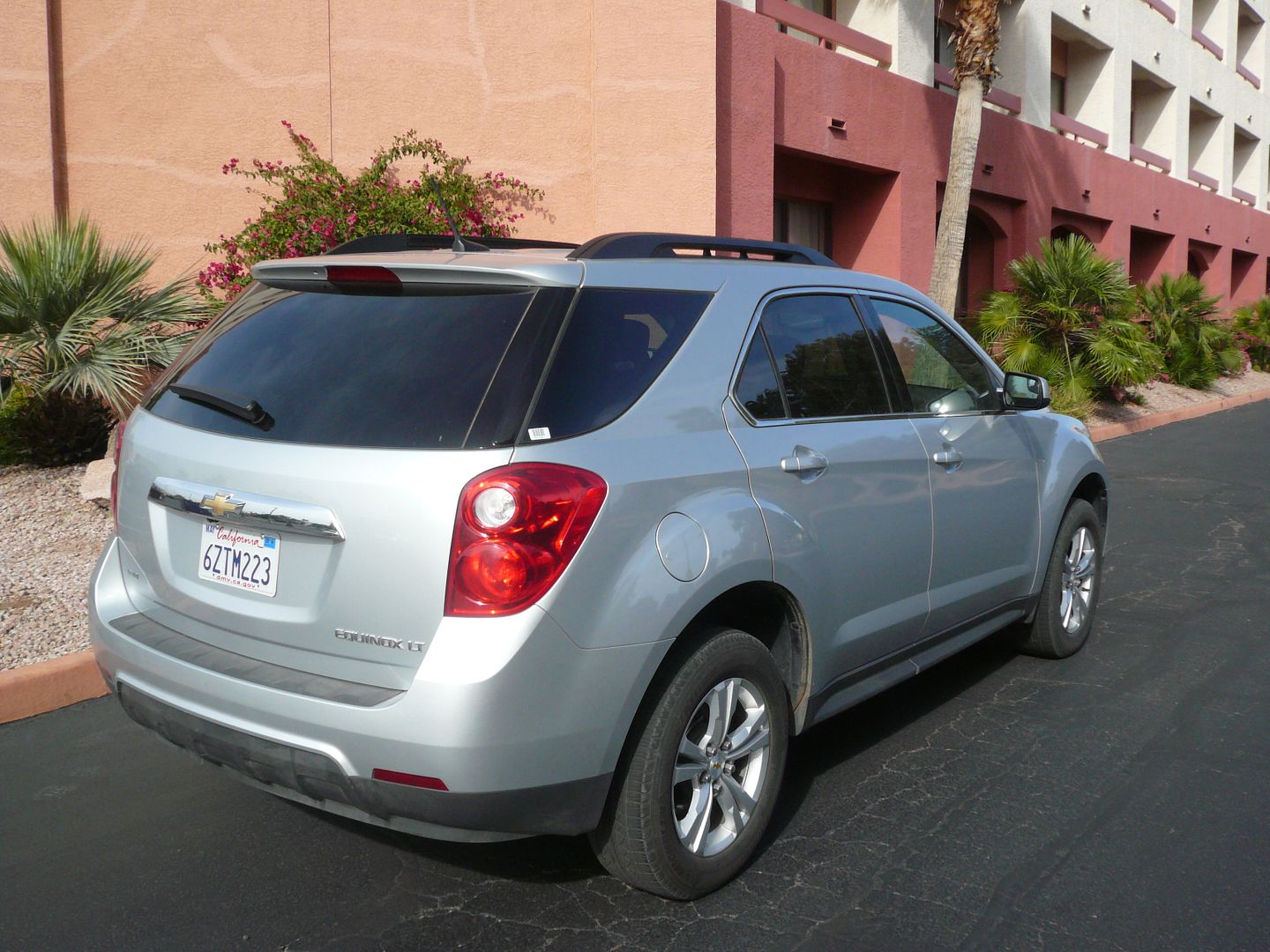
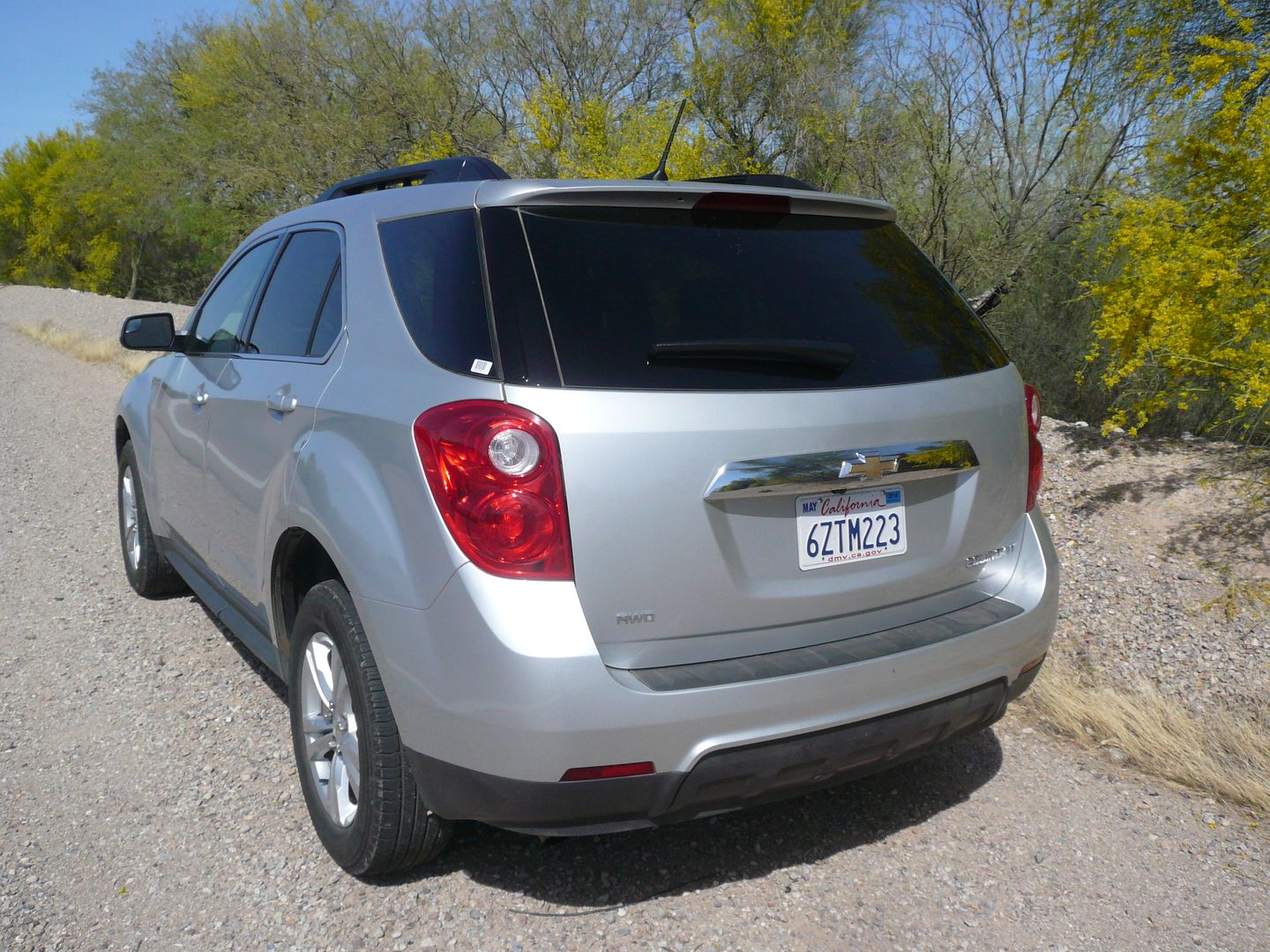
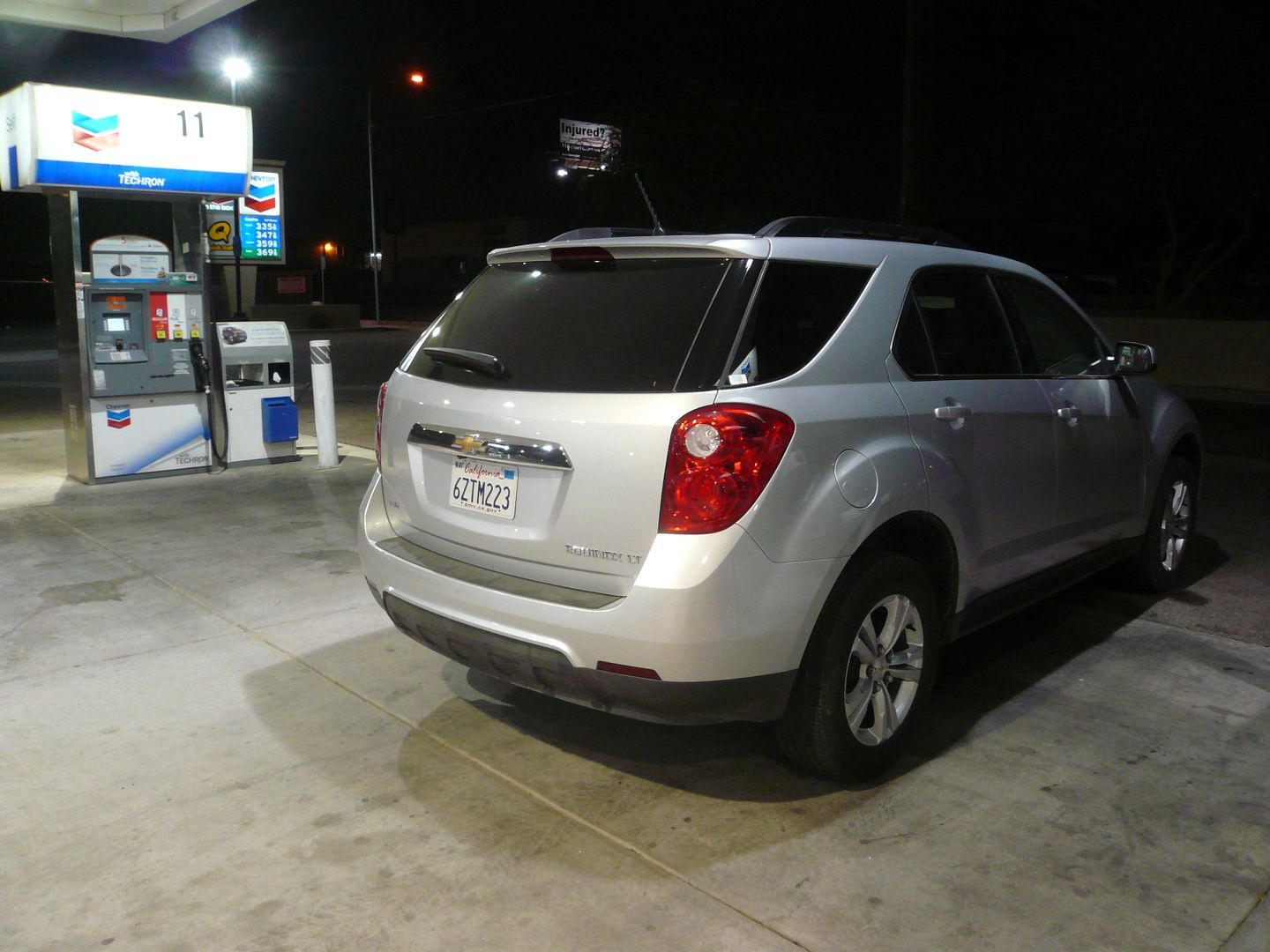
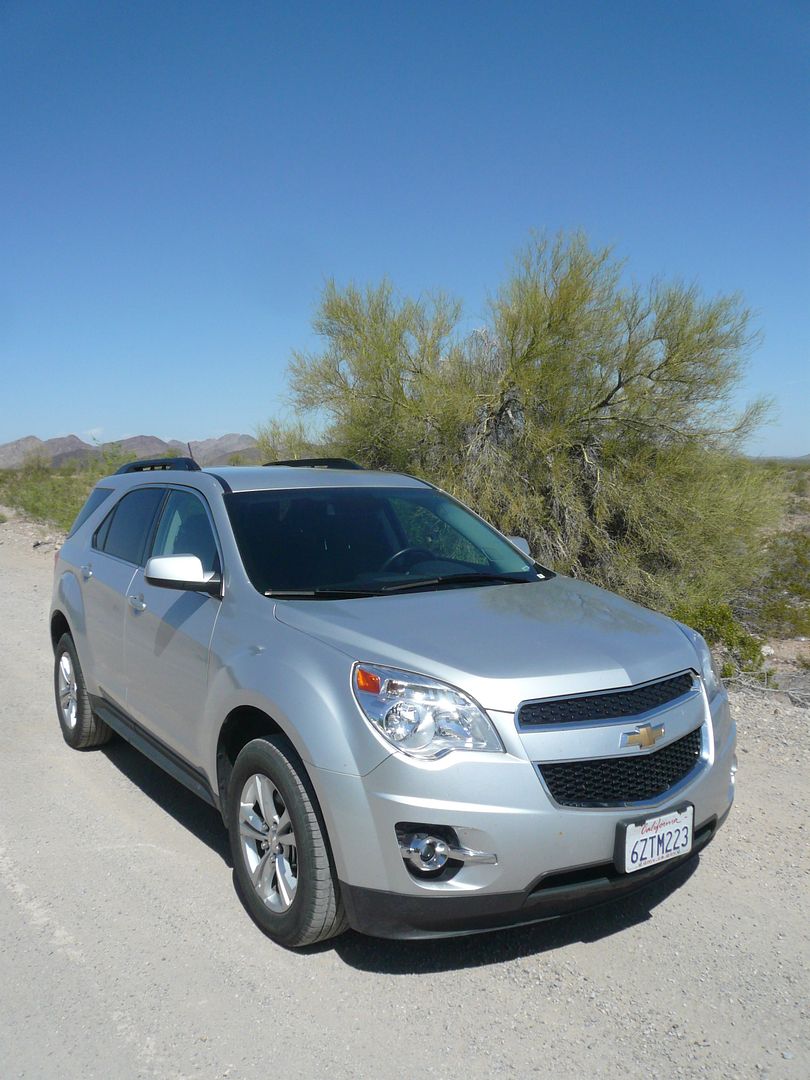
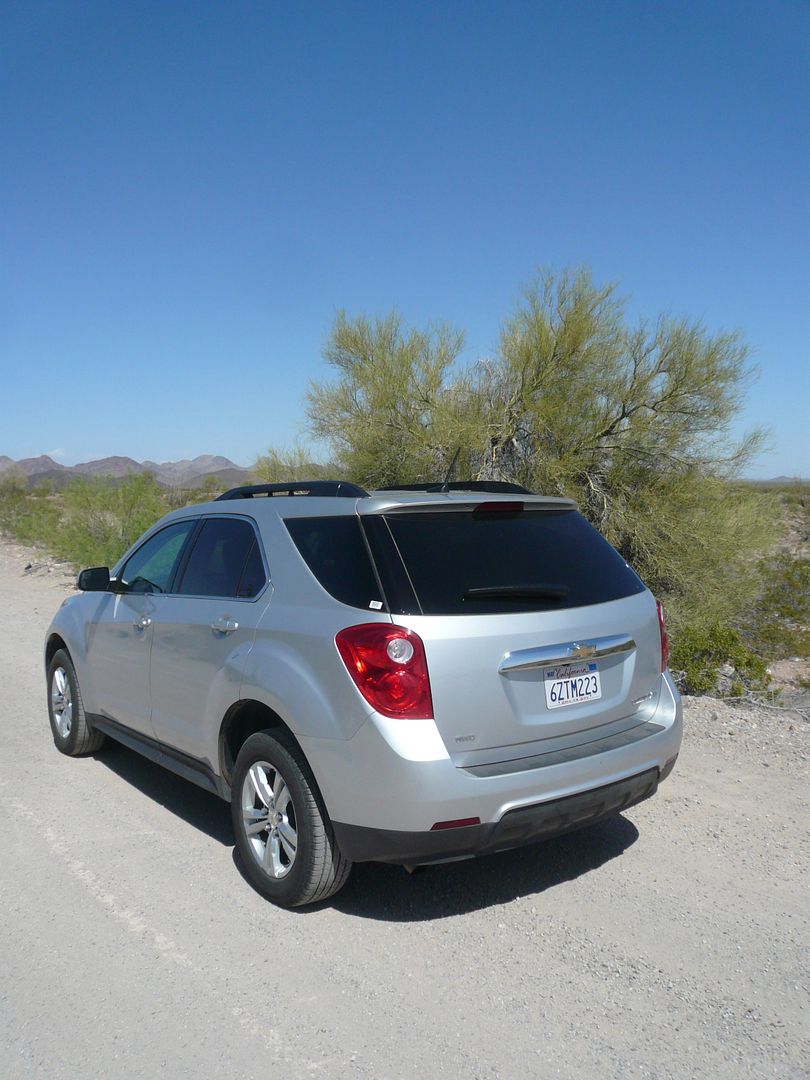
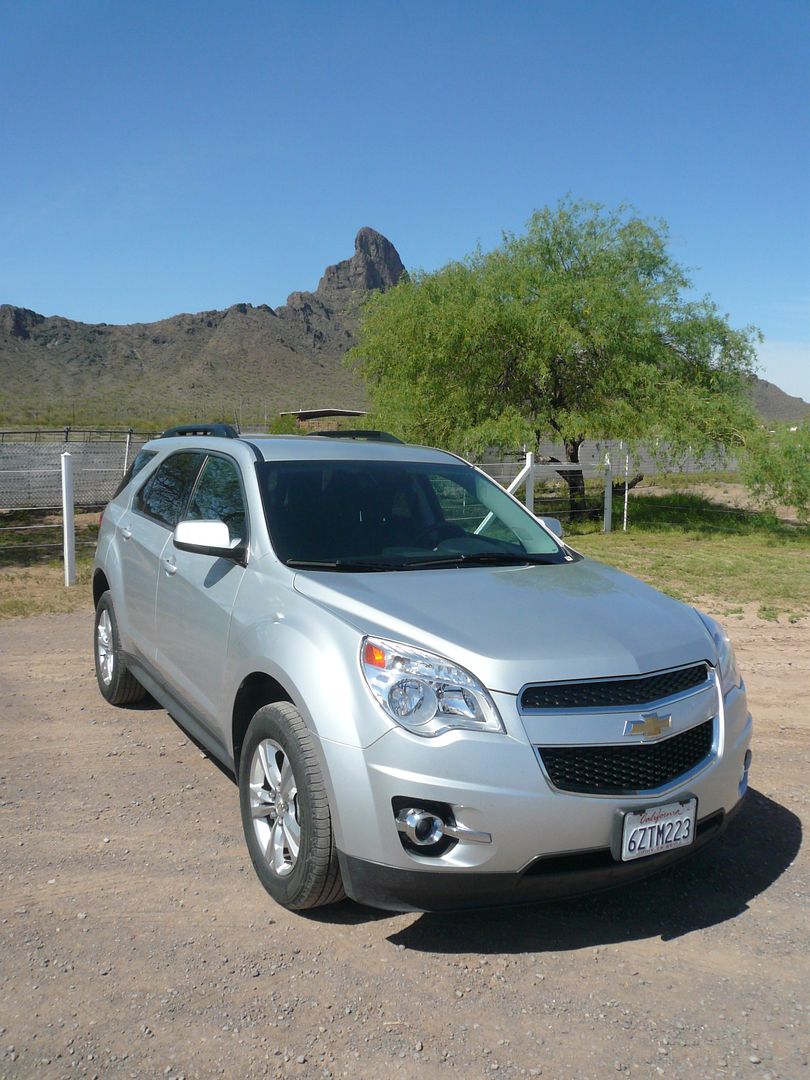
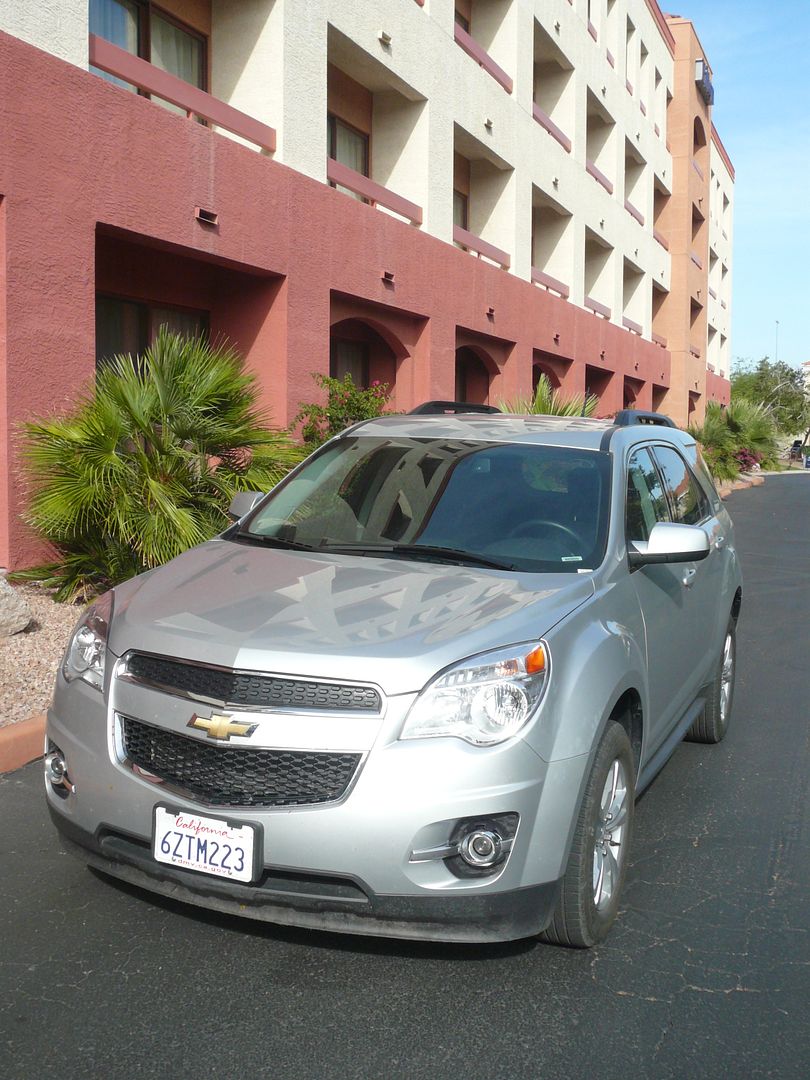
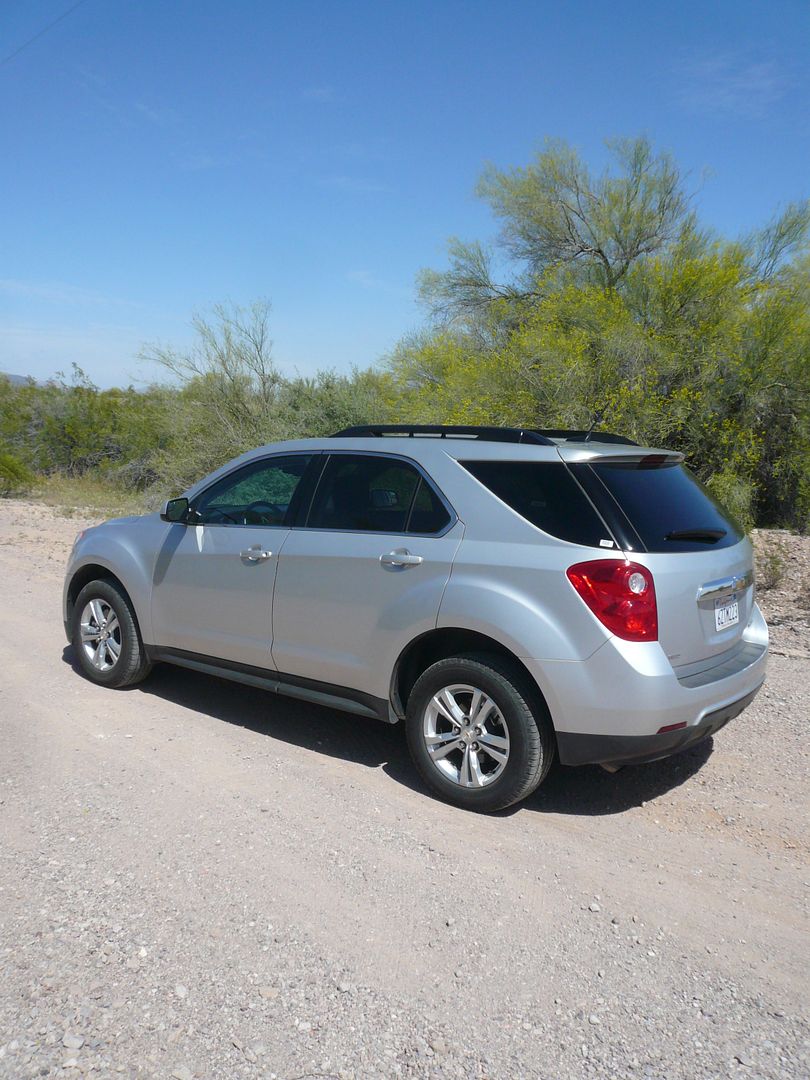

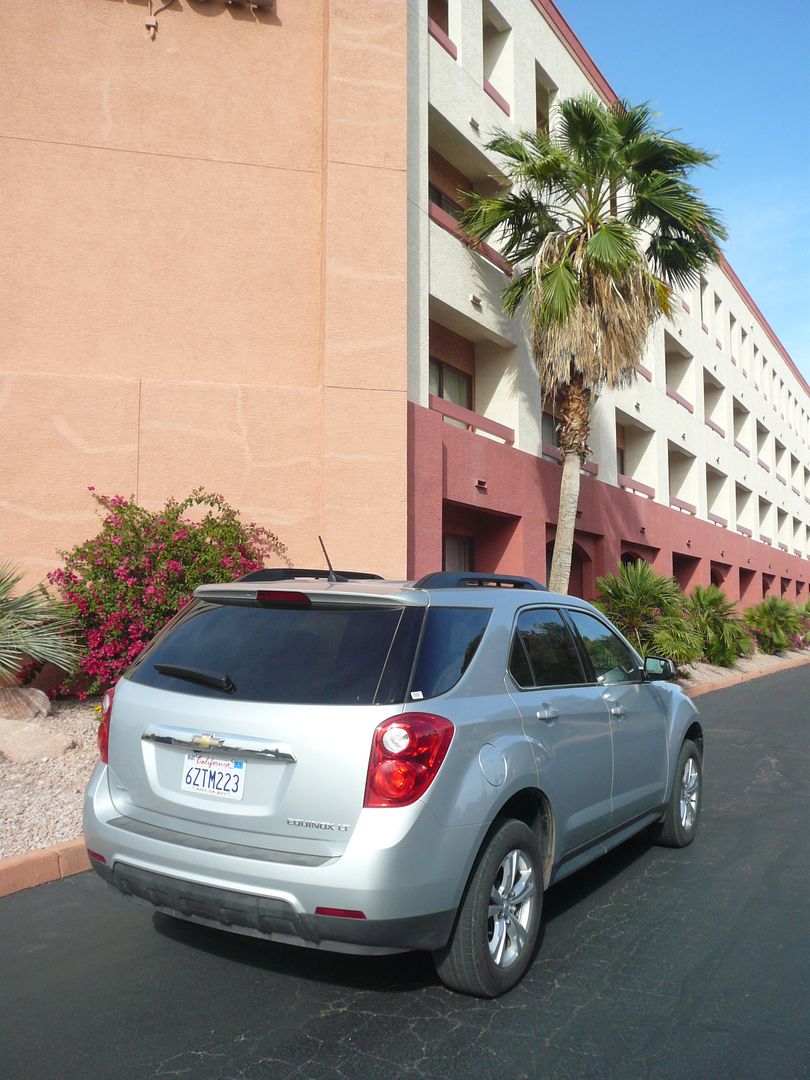
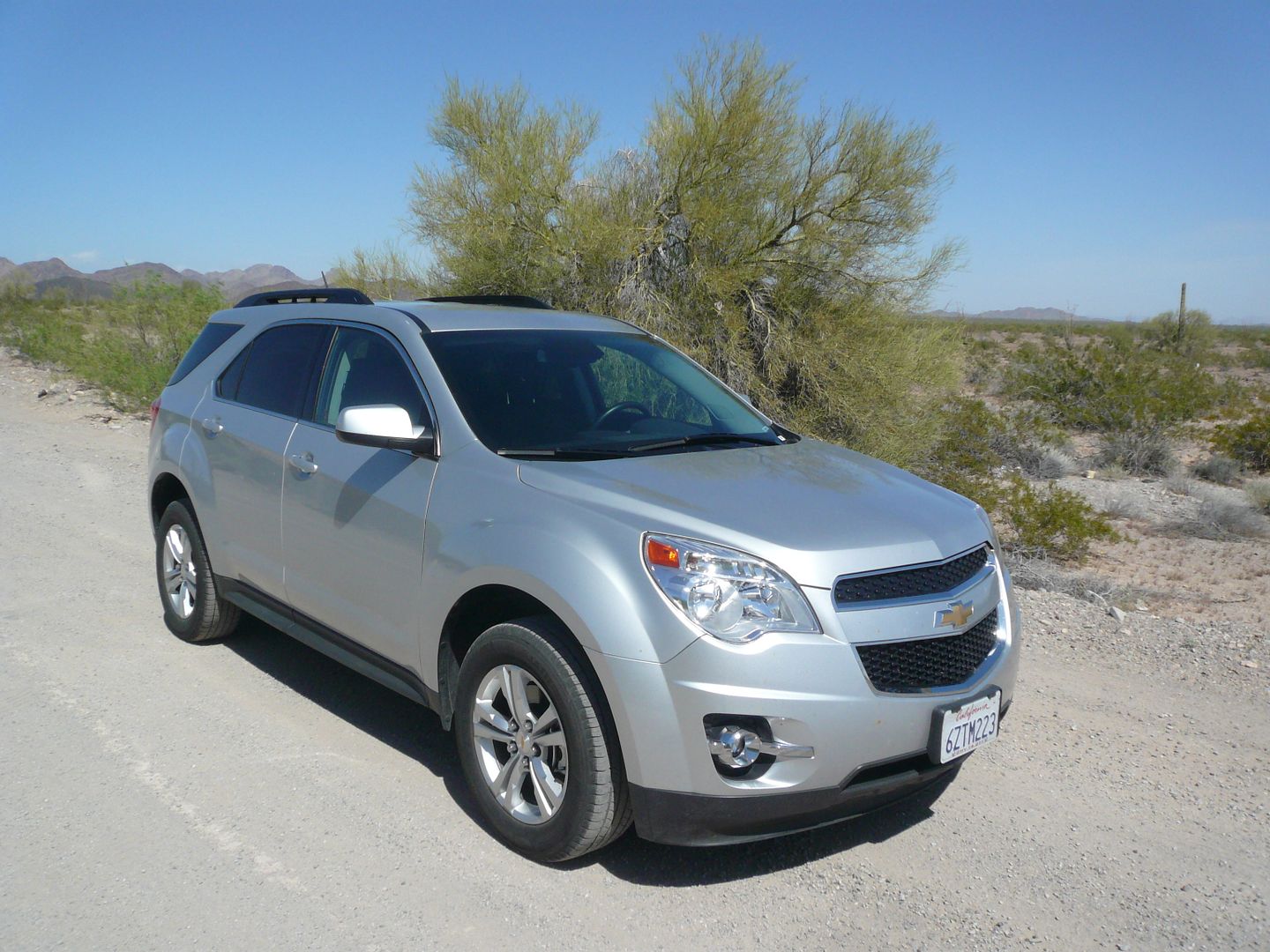
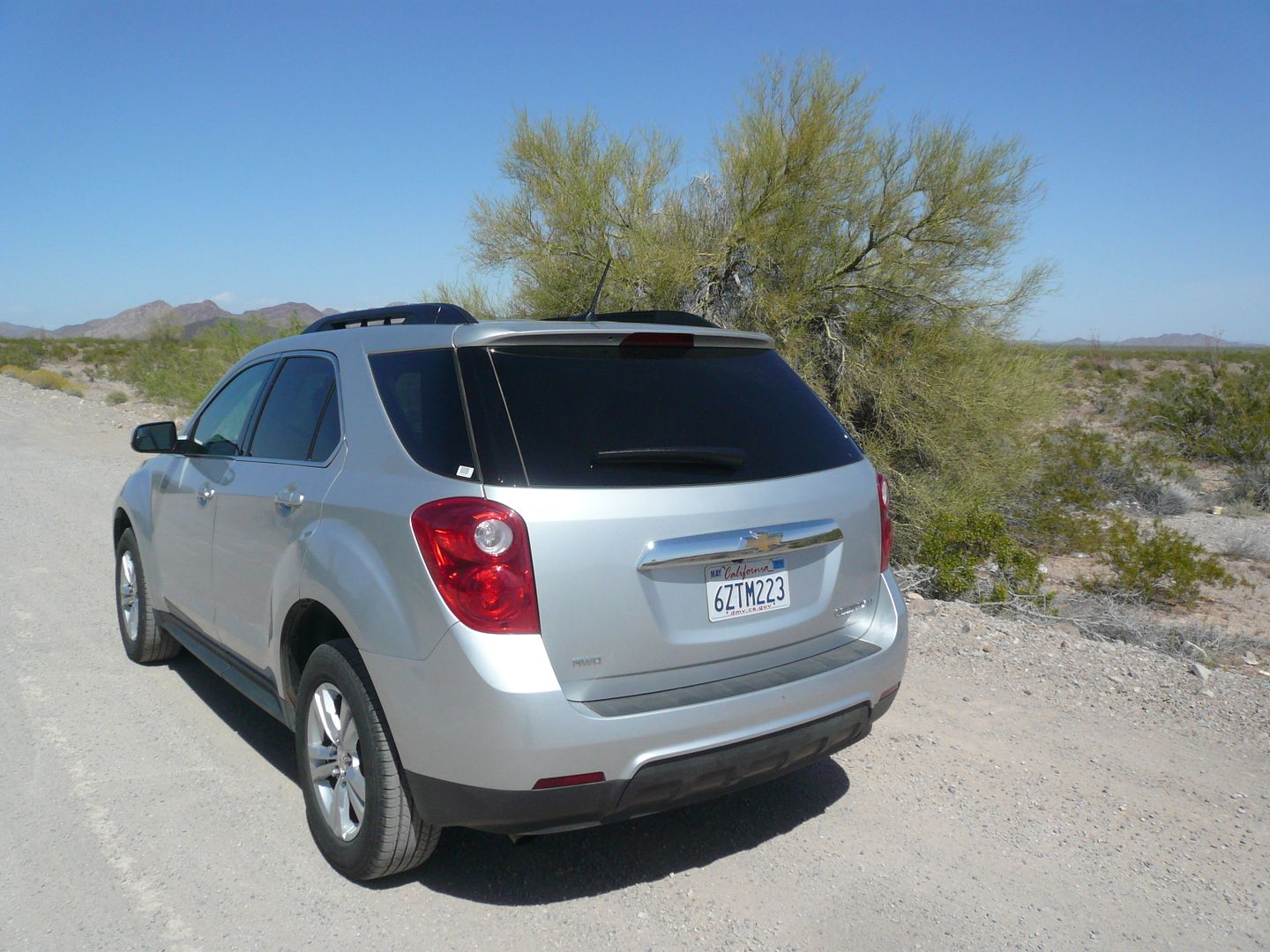
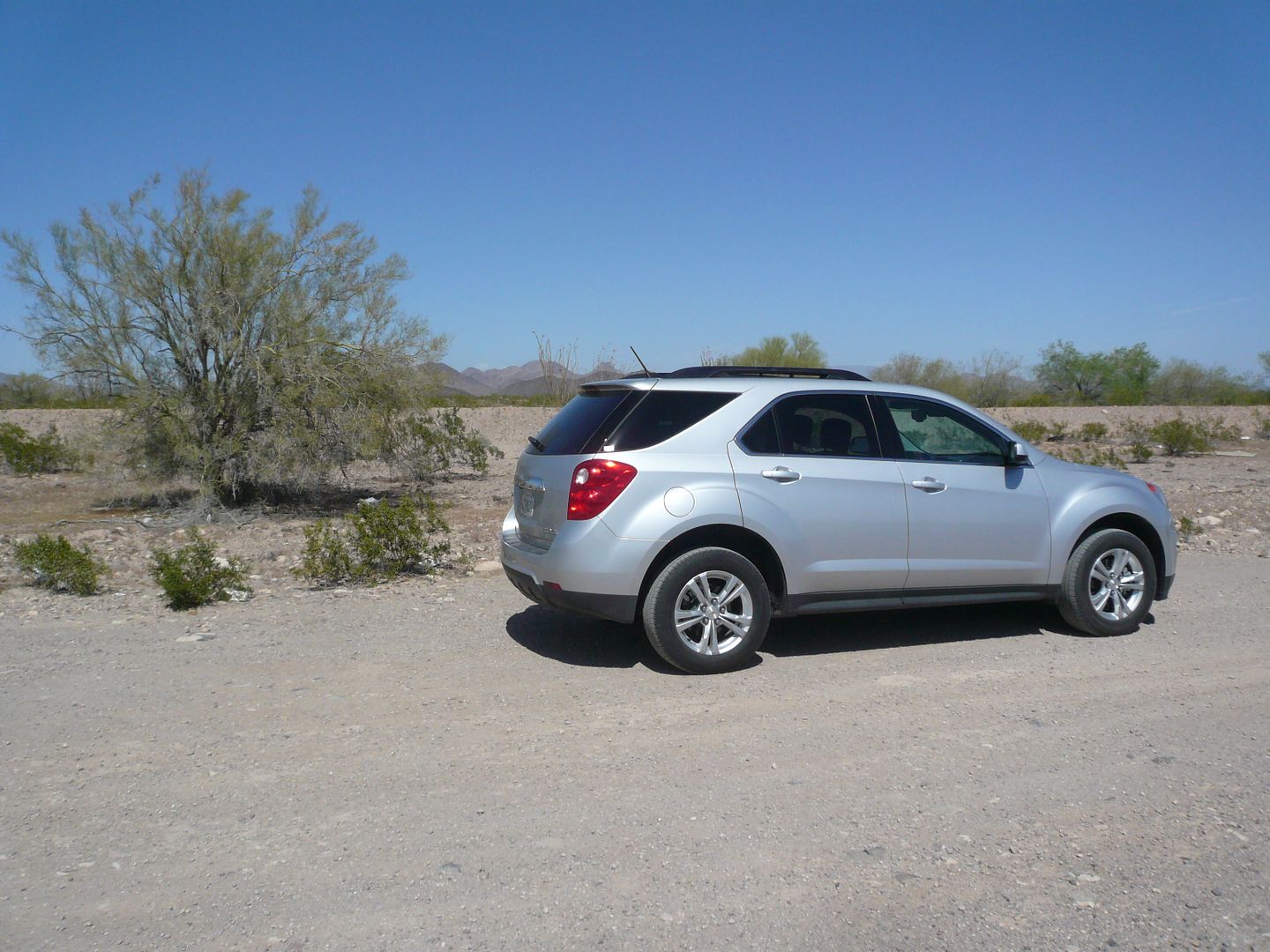


Standard engine for the Equinox is GM’s trusty 2.4 litre 4 cylinder Ecotec unit, putting out 182 bhp, coupled to a six speed automatic gearbox, and this was fitted to the test car. A 301 bhp 3.6 litre V6 is optional, and all the reviews I have read suggest that this is infinitely preferable. The 4 banger proved to be decently refined until you worked the engine hard, and if you wanted a sudden burst of acceleration then you would need to press quite firmly with your right foot on the accelerator. The gearbox was very smooth, though, with changes between the ratios almost imperceptible, again, unless you were working the car hard, when it would hang on to a lower gear longer than you might expect, which meant more revs and more noise, and eventually, more speed. All this can clearly take its toll on fuel economy. According to the display in the vehicle info unit, someone had once managed to average 42.8 mpg over 50 miles. Goodness knows how. I averaged exactly 24 mpg US over a lengthy test distance, much of which was at a steady speed on the freeways of Arizona, some of which was battling against some incredibly strong winds. For a vehicle of this size, 24 mpg is probably not bad. “Not bad” is also the phrase you would use to describe the driving dynamics. Equinox does not have the final sharpness and precision that you would expect in a Mazda or a Ford, but nor is it vague and over assisted as you would experience in a Toyota. The steering was well judged, being light enough to operate, but with some feel to it. There is quite a bit of roll, and some understeer when taking the corners, but you are not really surprised by that in a Crossover type vehicle. After the very mushy brakes of the Cruze, I was pleased to find that in this Equinox (which had done a much higher mileage), there was almost instant retardation when you pressed the pedal. The parking brake operates from a foot pedal to the left of the footbrake. The ride was good, which coupled with low noise levels when cruising at a steady speed on the freeway made the Equinox a comfortable and relaxing car for all those miles. All round visibility was also good, with the door mirrors featuring the neat and simple solution to the blind spot by including an extra mirror set in the top corner to give a different field of view. There was a reversing camera, and it projected a clear image, in colour, onto the MyLink screen, making it even easier to judge the rear end of the Equinox, though with its squared off styling, it was not hard to place anyway.
This was the third Chevrolet that I have driven within the space of the week, and the interior shared many design cues with the Captiva and Cruze that I had already sampled. The dash is pleasingly simple and uncluttered. There is a single cowl covering all the dials, and then each instrument is presented in a very hooded recess of its own, the outer pair of which are quite squared off, like you also find in a Camaro and the Malibu. These larger dials are for the speedo and rev counter, and then a much smaller duo of fuel gauge and rev counter are presented in the upper area between the larger dials, both of them using a semi-circular arc from one extreme to the other. Below these is the display area for the on-board vehicle info. I searched for quite a while for a button to allow me to cycle through the various menu options, and eventually found a row of them in among the Infotainment system, which would allow you to switch from seeing trip mileage, current speed and, most interestingly, a comparison bar chart showing average fuel consumption over the last 50 miles against “best achieved”. GM standard column stalks operate indicators from the left, and wipers from the right, whilst lights operate from another stock part, a rotary dial on the dash to the left of the wheel. The centre of the dash contains a single integrated unit comprised of a 7″ colour display unit and a large number of buttons, all set between a pair of vertically stacked air vents. This contains the controls for the MyLink Infotainment system, as well as the climate control. The unit is set at a slant, and proved to be a slightly awkward stretch away for me (and remember, I sit quite close to the steering wheel, thanks to my short legs). The screen is touch sensitive, and as this is the third time I have encountered MyLink in the past week, proved easy to use. What also puzzled me for a few minutes was that although the array of knobs and buttons for the climate control looked intuitive enough, I could not see what temperature I was selecting for the climate control. And then I spotted that it was a small display in the bottom of the MyLink screen. It’s the sort of thing that will only puzzle you once, but yet another sign that as cars get more complex, they get less intuitive to the newcomer. The screen is also used to project images from the reversing camera. One thing that has not changed, and it needs to, is the quality of the plastics used. This felt like “old school” GM, with some very thin and hard feeling materials used for the dash and door casings.
In LT spec, you get cloth covered seats, but they are electrically adjusted. There’s a tilt and telescopic adjustment for the steering column, so it was easy to get a comfortable driving position. There’s ample space in the back of the Equinox for three adults. Legroom is plentiful, as is headroom, and the width looked as if it would be fine as well. The angle of the rear backrests can be set to three different positions. There’s quite a decent loadspace area, even though it is – at least in the rental spec vehicle – completely unhidden by any form of parcel shelf. A nice regular shape, it extends a reasonable length from tailgate to rear seats, with very deep stowage wells on either side in the area behind the wheelarches. More space can be created by dropping the rear seat backrests, which are asymmetrically split, down onto the seat cushions. The resulting extra length is almost flat, with just a slight slope upwards, and would make the Equinox a very capacious 2 seater indeed. Inside the cabin, I was astonished when I lifted the lid on the centre armrest to find a cubby so deep that you could barely reach anything small that you placed in it. There is also a large area in front of the gearlever, as well as modest glovebox, and bins on all 4 doors, and a small moulded area on the passenger side of the transmission tunnel. Rear seat passengers get stowage nets in the back of the front seats.
Following Chevrolet convention, the Equinox is offered in LS, LT and LTZ trims, with the LT further split into the 1LT and 2LT sub-variants. LS models are only offered with the 4 cylinder engine, whereas the V6 can be added to the LT and LTZ cars. With an entry price of $24,440, the LS features include a tilt and telescoping steering wheel and steering wheel-mounted controls for audio and cruise, 4-wheel anti-lock disc brakes with Electronic Brake Force Distribution, StabiliTrak® Electronic Stability Control System with Traction Control and rollover mitigation, Six air bags and Passenger Sensing System, power-adjustable, manual-folding outside mirrors (black) with integrated blind spot mirrors, Active noise cancellation, Acoustic laminate glass and triple door seals, a compass and outside temperature displays, Bluetooth wireless technology, a 3-month trial of SiriusXM Satellite Radio, GM’s OnStar® Directions & Connections standard for six months, a USB port, Multi-Flex sliding rear seat – 60/40 split with three positions recline and 17″ alloy wheels. For an additional $1645, the 1LT adds Premium Cloth seats, a leather-wrapped steering wheel, the Chevrolet MyLink Infotainment unit with 7″ diagonal high-resolution colour touch-screen, rear vision camera, recessed overhead LED light, power-adjustable, heated, manual-folding outside mirrors in body colour with integrated blind spot mirrors, deep-tinted rear glass and roof rack side rails. The 2LT adds to this with Premium Cloth seats with heated front seats, 8-way power-adjustable driver seat, a Pioneer premium 8-speaker sound system, auto-dimming inside rearview mirror, automatic climate control, front foglamps and a remote vehicle starter system. The top spec LTZ adds:sports tuned suspension for the V6 models; perforated leather seats; heated front seats; 8-way power-adjustable front passenger seat; memory settings for driver seat and exterior mirrors; body coloured bumpers with bright lowers; chrome door handles, exterior mirrors and roof rack side rail inserts; power-programmable tailgate; projector-style halogen headlamps; enhanced interior lighting; a Safety Package of Forward Collision Alert, Lane Departure Warning and Rear Park Assist; Universal Home Remote and 18″ chrome-clad aluminium wheels. All Wheel Drive models appear to have the same spec as the Front Wheel Drive cars, and are distinguished visually by a small badge on the lower left of the tailgate.
Whilst nothing really stood out on the Equinox, making it very hard to be truly impressed, nor did anything really strike me as a significant weakness, either. This is just one of those vehicles that goes about its job, doing what is required of it, with minimal fuss. And that is precisely what so many buyers in middle America are looking for, and they should be pleased as no longer will they feel the need to look to the products of the Far East for something that ticks all their proverbial boxes. And for those who want a rental something to convey them, their family and friends and their luggage on holiday, then the Equinox will meet their needs too. It won’t wow, or thrill in any way, but it will deliver. You could argue that those who want a touch more excitement and sparkle in what they drive should not be looking for this class of car at all, though Mazda’s CX5 and Ford’s Escape prove that you can combine a CUV with some fun. With 301 bhp under your right foot, you might just get that in a V6 powered Equinox, too. All I have to do is to find one, and try it.

